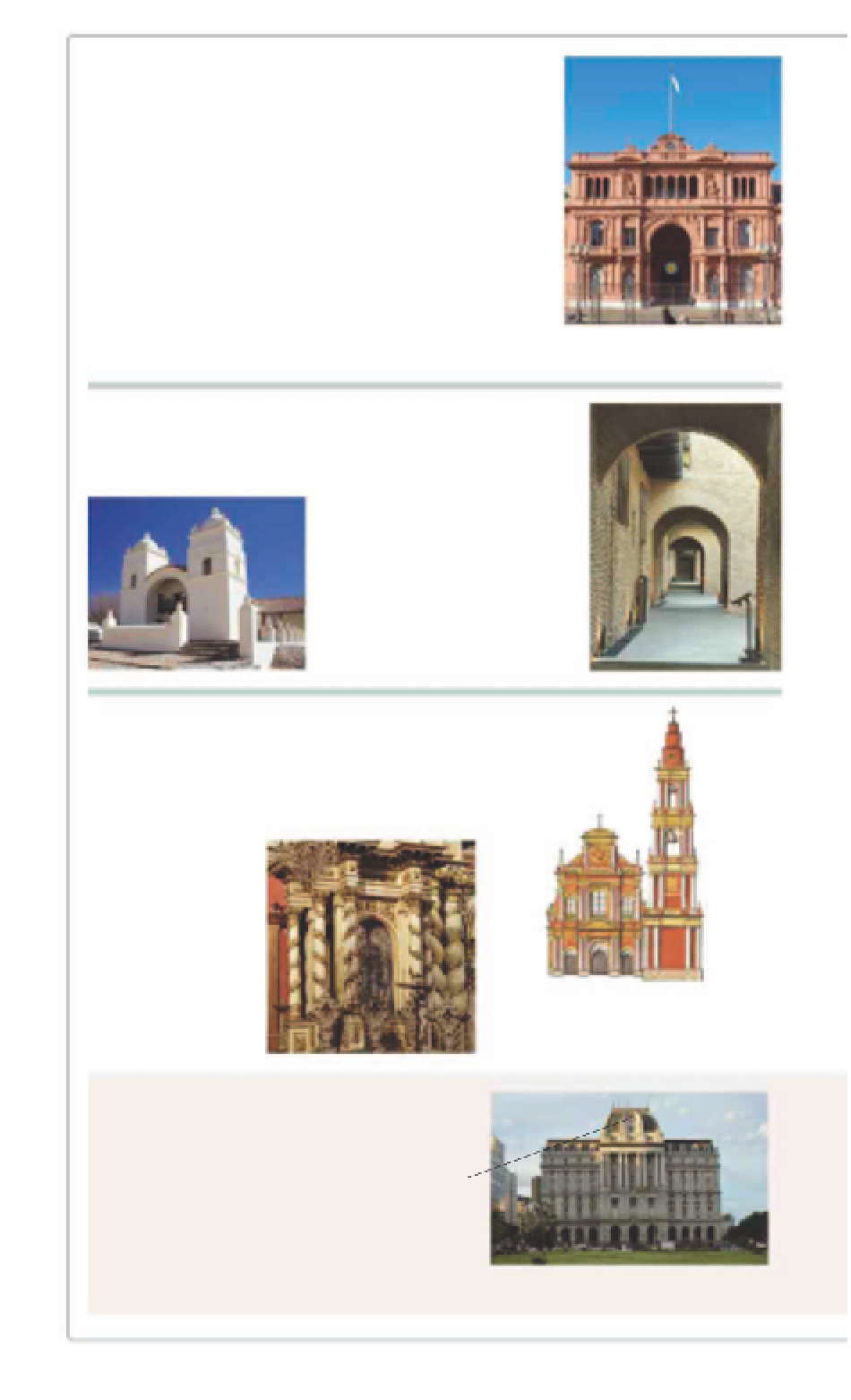Travel Reference
In-Depth Information
Architecture
There is no single architectural style that can be called
Argentinian. Porteño architects have always borrowed from
European styles and the capital is characterized by eclecticism,
with French mansards, Art Deco cupolas, and glass-walled
skyscrapers. Across the provinces, the most interesting
buildings are often small colonial churches and low-slung
19th- and 20th-century town houses which, with their patios
and wrought-iron gates, pay homage to Andalucia and the
Old World. Occasionally, a Modernist masterpiece or Brutalist
warehouse rises in the Pampas, remnants of earlier, wealthier
periods in Argentinian rural history.
The ornate Casa Rosada on Plaza de Mayo,
Buenos Aires
Early Colonial
Few buildings of the 16th to 18th centuries remain, as most of the
fortresses, ranches, and ordinary residences erected then were
improvised adobe constructions made of fibrous material.
Iglesia de San Pedro
in Salta was
built in the 1770s. Its whitewashed
adobe and local brick walls, plain
façade, and twin bell towers are
typical of Spanish colonial churches.
El Zanjón
(see p82)
in Buenos Aires
has arches made of slim, rustic bricks,
which can be seen in the remnants of
many early civic buildings.
Baroque
Popular in the 18th and mid-19th centuries, the Baroque style
was introduced by Jesuit scholars who combined it with
Moorish and indigenous elements, giving church exteriors a
rich, varied character and imposing façades.
Details are picked
out in braidlike
golden yellow
The church
has
dis tinc tive
terra cotta
walls
The Iglesia de la
Compañía
in Córdoba
(see p184)
is a
17th-century Jesuit-built
church with a richly
deco rated interior. Most
noteworthy is
the Baroque panel,
which is the work
of Catamarca-born
painter Emilio Caraffa.
Iglesia y Convento San Francisco
in Salta
(see p199)
was built in
1858, and has a wide and elegant
Baroque façade.
Immigrant Architecture
Argentina's architectural eclecticism
derives from the native penchant for
copying all things European, and also
from the fact that many architects are
descendants of immigrants. Across the
country are dotted British-style railway
stations, grand estancias modeled after
French rural châteaux, and Bauhaus-
influenced urban dwellings.
Truncated
dome on the
mansard roof
Beaux-arts grandeur of Correo Central


































